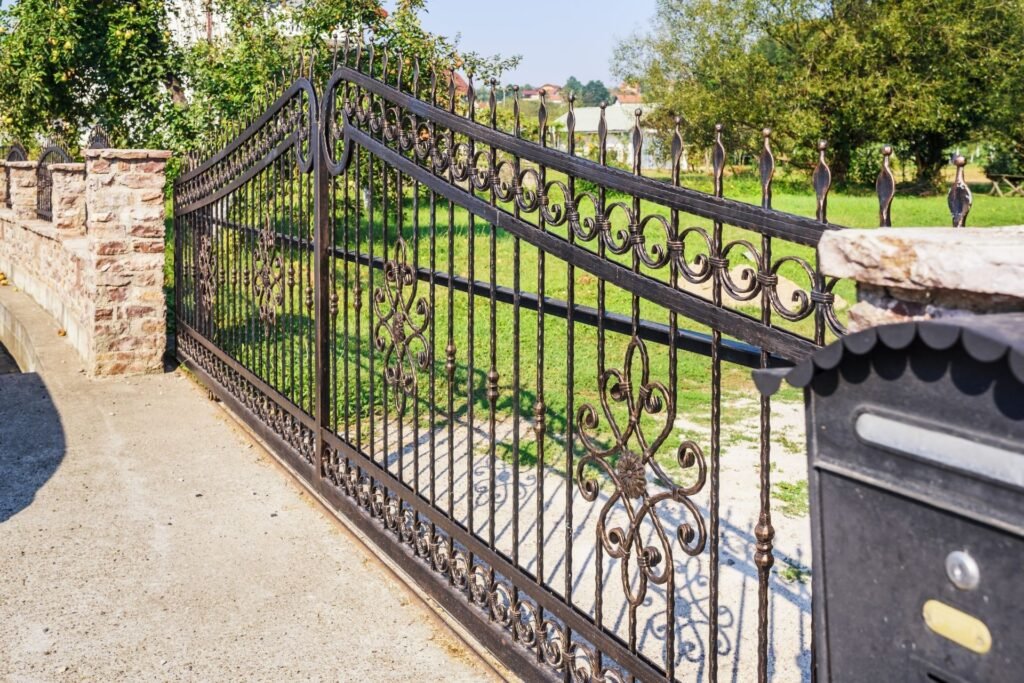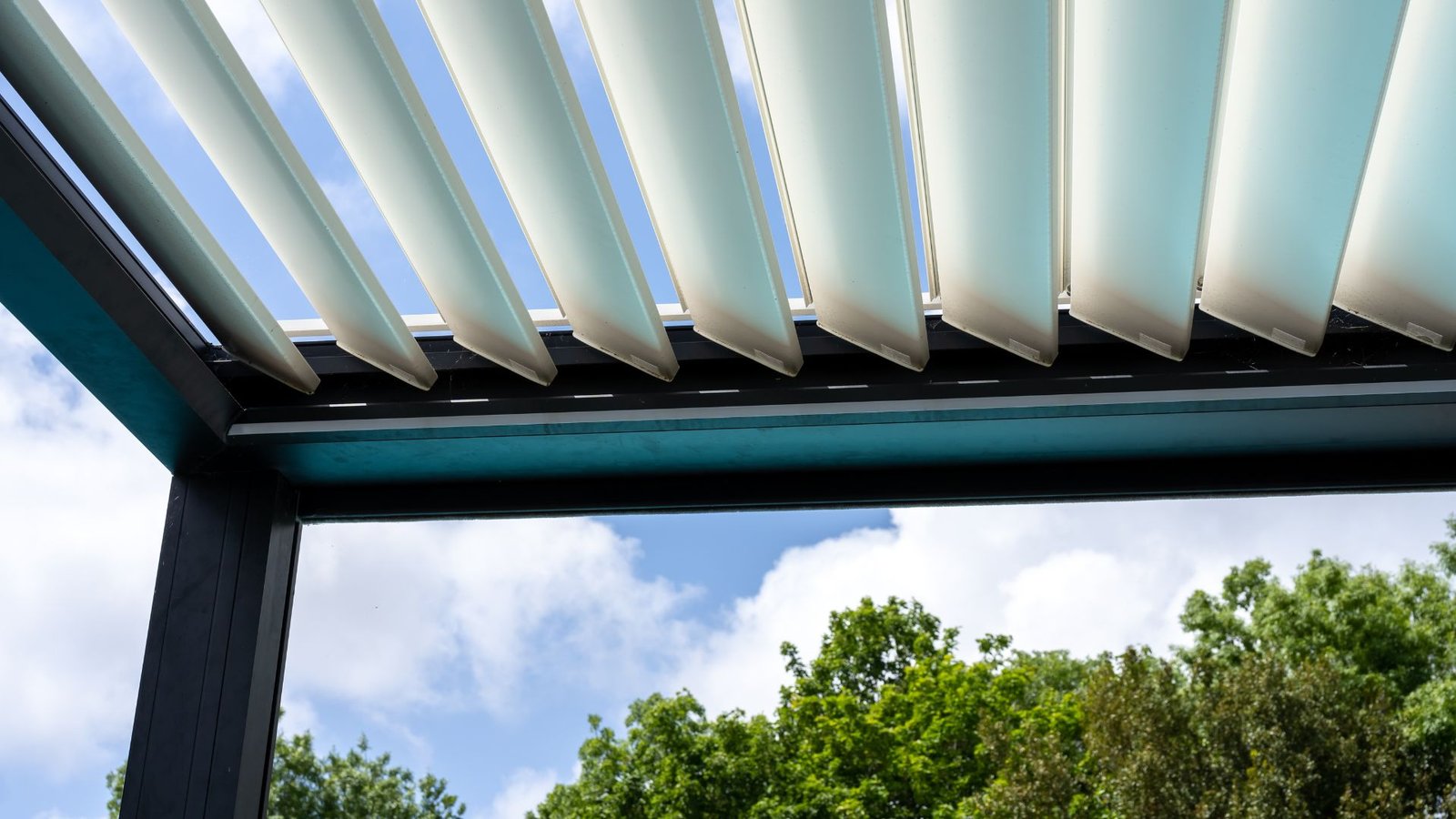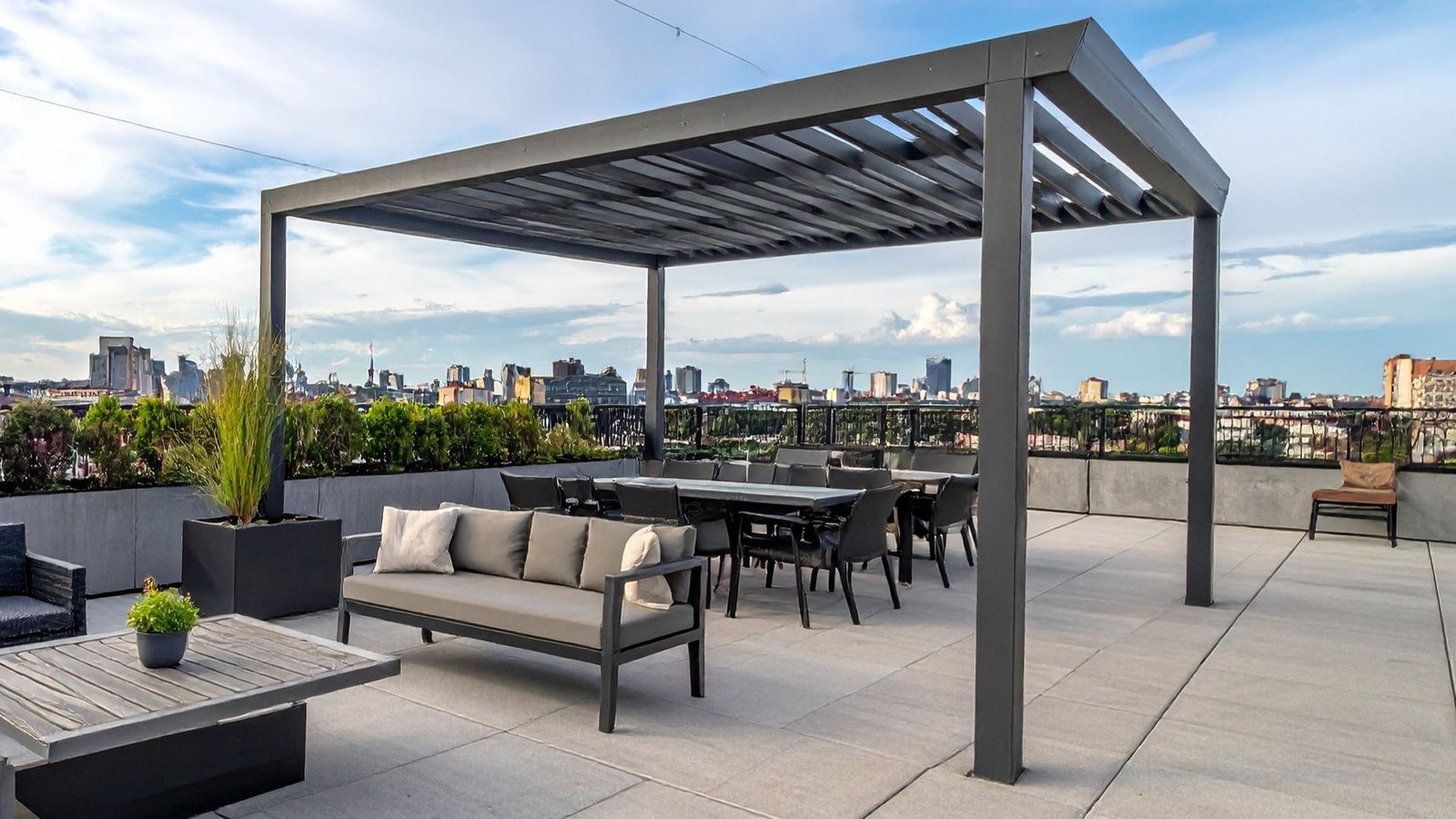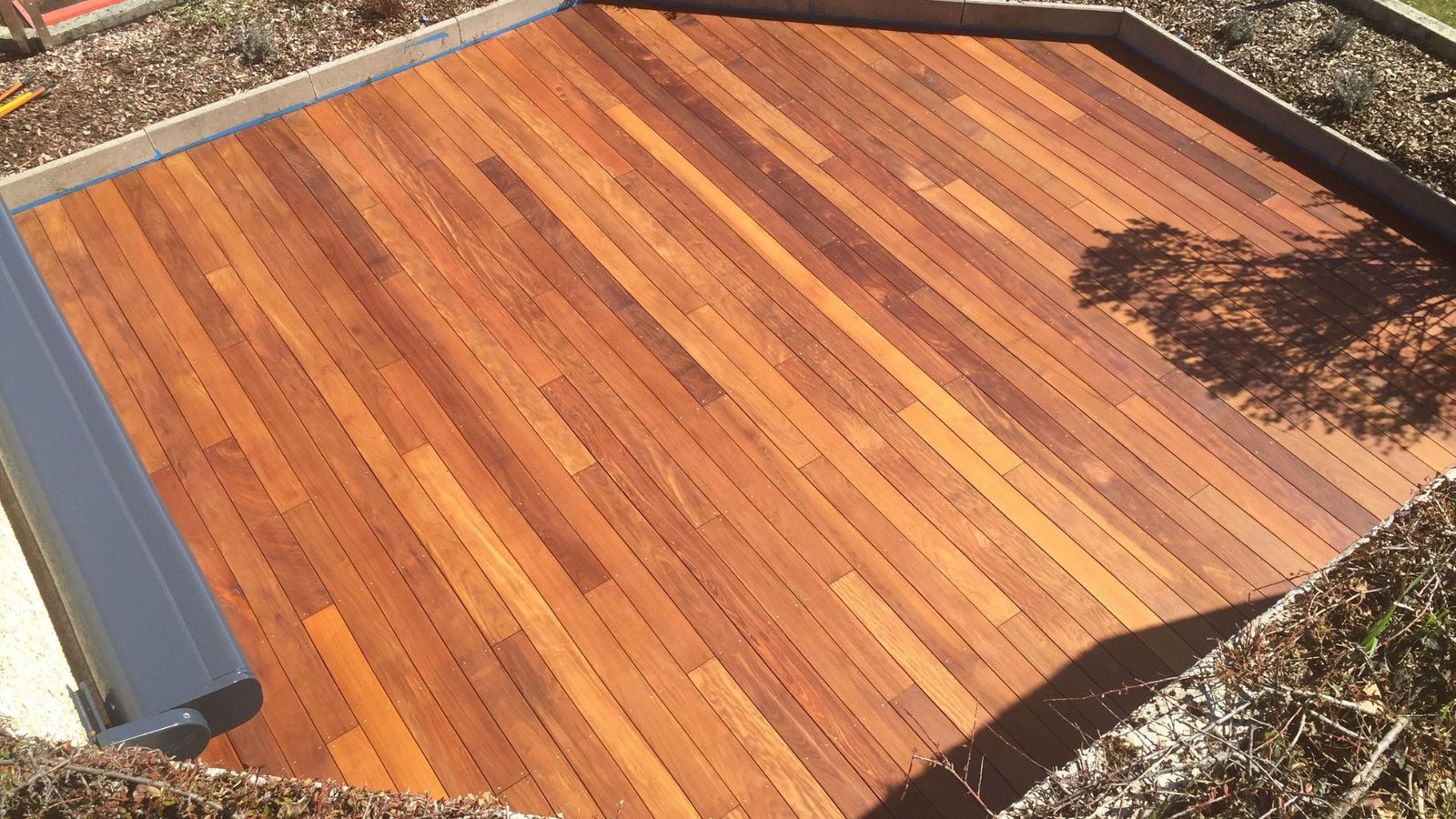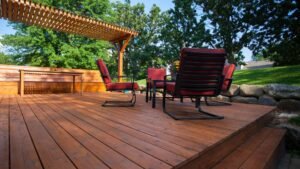Welcome to our comprehensive guide on determining how many gates your fence should have in New Zealand. Whether you’re looking to enhance security, improve accessibility, or add aesthetic appeal to your property, the number of gates you install can significantly impact the functionality and appearance of your fence. In this blog post, we will delve into the various factors that influence the ideal number of gates for different types of properties, from residential homes to commercial and agricultural land. We’ll also explore the types of gates available, local regulations you need to be aware of, and practical tips for making the best decision. By the end of this guide, you’ll have a clear understanding of how to plan and implement the perfect gate system for your fencing needs.
The number of gates your fence should have in New Zealand depends on several factors including the size and layout of your property, the purpose of the fence, and local regulations. For residential properties, typically one or two gates are sufficient to provide both vehicle and pedestrian access. Larger properties or those used for agricultural or commercial purposes may require additional gates for equipment access and emergency exits. It’s essential to consider security, convenience, and compliance with local council requirements when determining the number of gates for your fence.
Table of Contents
Understanding The Purpose Of Fence Gates
Fence gates serve multiple crucial functions that enhance the overall utility and appeal of a property. Let’s delve into the primary purposes of fence gates: security, accessibility, and aesthetic appeal.
Security
One of the foremost reasons for installing a fence gate is to enhance the security of a property. Gates act as a barrier, preventing unauthorized access and safeguarding the premises. Whether it’s a residential home, a commercial building, or an industrial facility, a well-constructed gate can deter potential intruders. By restricting entry points, gates help to ensure that only those with permission can enter, thereby protecting the occupants and valuable assets within the property. Additionally, many modern gates can be equipped with advanced security features such as keypads, intercom systems, and surveillance cameras, further bolstering the security of the premises.
Accessibility
While security is a primary concern, accessibility is another critical function of fence gates. Gates provide convenient entry and exit points to various parts of a property. For instance, in a residential setting, a front gate offers access to the home, while a side or back gate may lead to gardens, garages, or backyards. In commercial and industrial settings, gates manage the flow of traffic, ensuring that vehicles and personnel can move in and out efficiently. Well-placed gates facilitate easy access without compromising the security or integrity of the fence, making them an indispensable part of any fencing system.
Aesthetic Appeal
Beyond their practical functions, fence gates also contribute to the aesthetic appeal of a property. A thoughtfully designed gate can significantly enhance the visual attractiveness of a fence and the property it encloses. Gates come in various styles, materials, and finishes, allowing property owners to choose one that complements the architectural style and landscape of their property. Whether opting for a classic wrought iron gate, a rustic wooden gate, or a sleek modern metal gate, the right choice can add elegance and charm to the surroundings. Moreover, a well-maintained gate can boost the curb appeal of a property, potentially increasing its market value.
In summary, fence gates are vital components that serve multiple essential functions. They enhance security by acting as barriers against unauthorized access, provide necessary accessibility to different parts of a property, and add to the aesthetic appeal, making them both practical and visually pleasing. Choosing the right gate involves considering these factors to ensure that it meets the needs and enhances the beauty of the property.
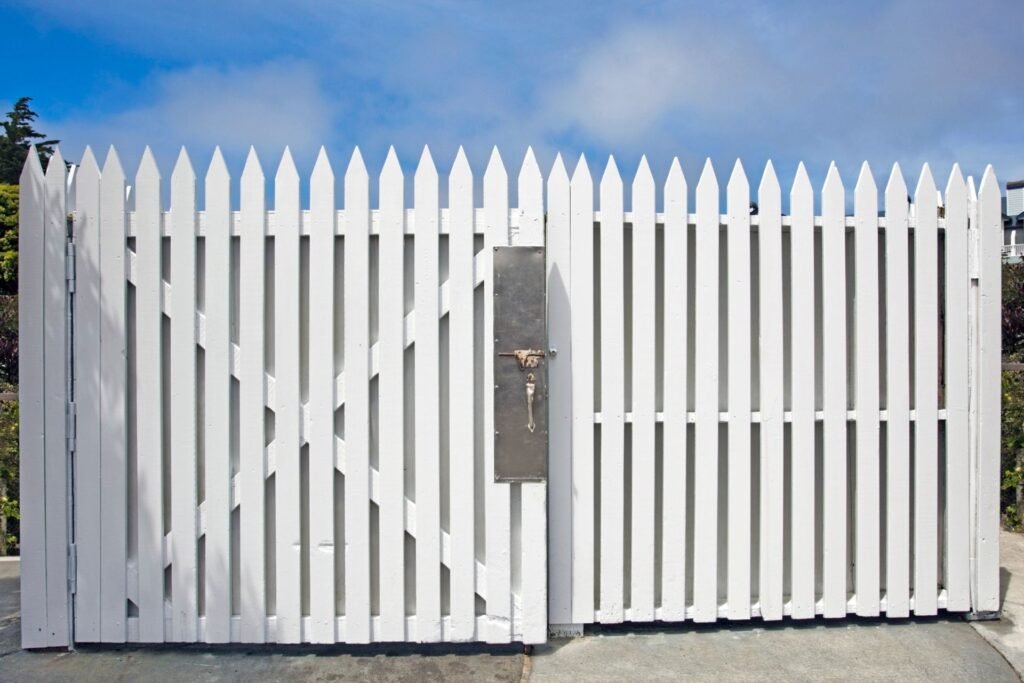
Factors Influencing The Number Of Gates
When planning a fence, determining the number of gates is crucial for functionality, accessibility, and safety. Several factors must be considered to ensure the right balance between convenience and security. Let’s dive deeper into these key factors.
Property Size and Layout
Large Properties
For larger properties, having more gates is often a necessity. This is especially true for estates or farmlands where different areas may need to be accessed frequently. Multiple gates can save time and effort, providing direct access points to various sections of the property. For example, a large estate might have separate gates for the main entrance, service areas, and recreational zones, ensuring smooth movement without having to cover long distances unnecessarily.
Small Properties
In contrast, smaller properties typically require fewer gates. With less area to cover, a single or a couple of strategically placed gates might be sufficient. The focus here is on optimizing space without cluttering the perimeter with unnecessary access points. For instance, a small suburban home may only need a main gate for the driveway and a side gate for backyard access.
Purpose of the Fence
Residential
For residential properties, gates serve both practical and security purposes. Homeowners need gates that provide easy daily access while maintaining safety. This could mean having a main gate for vehicle entry and a pedestrian gate for walk-in access. Security features such as locks and surveillance can be integrated to enhance protection.
Agricultural
In agricultural settings, the function of gates extends beyond human access. Gates must accommodate farm equipment, livestock movement, and sometimes even larger vehicles like tractors and trucks. The number and size of gates in this context are critical to the efficient operation of the farm, ensuring that there are enough access points to facilitate the seamless movement of resources and livestock.
Commercial
Commercial properties often have specific regulatory requirements dictating the number and type of gates. These might include loading docks, employee entrances, and emergency exits. The design of commercial fencing and gates must balance functionality with compliance, ensuring that all operational and safety standards are met.
Number of Entrances and Exits
Primary Entry Points
The main gates of a property are crucial as they serve the primary access points for both vehicles and pedestrians. These gates are typically more robust and feature-rich, designed to handle frequent use and provide a secure entry. The main gate sets the tone for the property’s security and accessibility, often equipped with advanced security systems.
Secondary Access Points
Secondary gates offer additional convenience, allowing access to less frequently used areas. These might include side gates, service entrances, or gates leading to specific areas like gardens or storage sheds. Secondary gates can help in reducing congestion at the main entrance and provide alternative routes for different purposes.
Safety and Emergency Access
Fire Exits
Safety regulations often mandate the inclusion of gates specifically for emergency use. Fire exits are a prime example, requiring easy-to-open gates that provide a quick escape route in case of an emergency. These gates must be strategically placed and comply with local fire safety codes to ensure they offer a safe evacuation path.
Quick Access for Emergency Services
In addition to fire exits, properties may need additional gates to allow swift access for emergency services. This is particularly important for larger properties or those located in areas where emergency response might be crucial. These gates need to be easily accessible and ideally positioned to enable emergency personnel to reach any part of the property quickly and efficiently.
In conclusion, the number of gates a property requires is influenced by its size, layout, purpose, and safety requirements. By considering these factors, property owners can ensure that their fencing system is both practical and compliant with all necessary regulations. Whether for residential, agricultural, or commercial use, planning the right number of gates enhances both functionality and security.
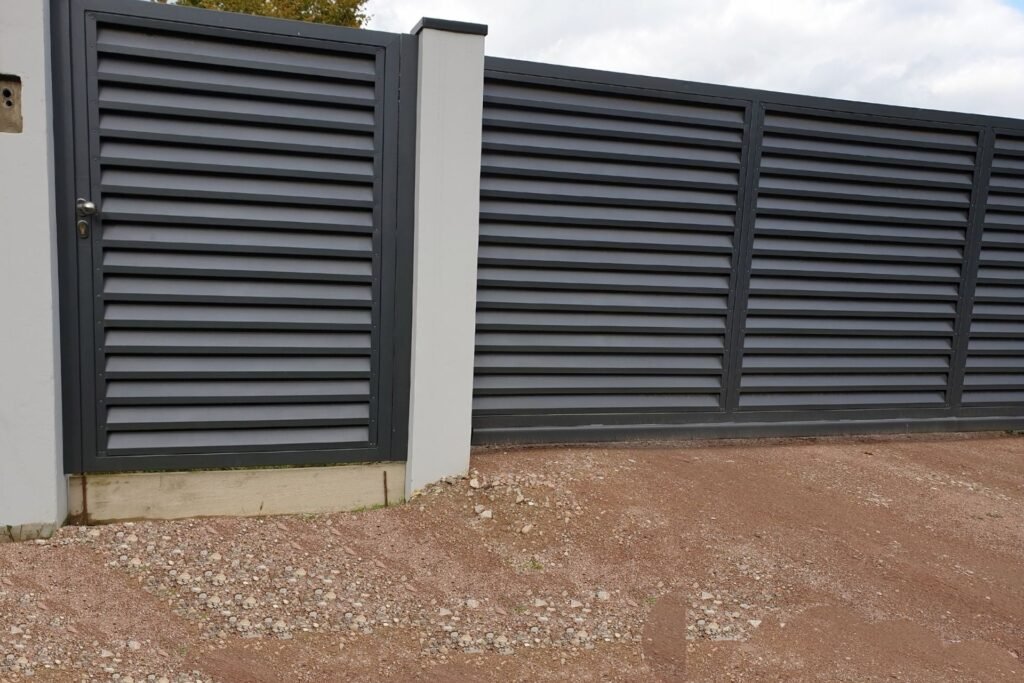
Types Of Gates To Consider
When it comes to choosing the right gate for your property, understanding the different types available can help you make an informed decision. Each type of gate has its own set of advantages and is suited for different needs and environments. Let’s delve into the various types of gates you might consider for your property.
Swing Gates
Swing gates are the most traditional and commonly used type of gates. They operate by swinging open and closed, similar to a door. Typically, swing gates can be single or double.
Advantages
- Aesthetic Appeal: Swing gates often have a classic look that can enhance the curb appeal of your property.
- Variety of Designs: They come in various designs and materials, allowing you to choose one that matches your property’s style.
- Ease of Use: They are relatively easy to operate and can be automated for added convenience.
Considerations
- Space Requirement: Swing gates need enough space to open fully, which can be a limitation in properties with restricted space.
- Maintenance: Regular maintenance might be needed to ensure smooth operation, especially if they are made of materials prone to rust or wear.
Sliding Gates
Sliding gates are an excellent choice for properties with limited space. Instead of swinging open, these gates slide horizontally along a track.
Advantages
- Space Efficiency: They do not require additional space to open, making them ideal for properties where space is at a premium.
- Security: Sliding gates are generally more secure because they are harder to force open.
- Automation: Like swing gates, sliding gates can be automated for easy access.
Considerations
- Installation: The installation of sliding gates can be more complex and may require a flat and level surface for the track.
- Maintenance: The track can accumulate debris, which needs to be cleaned regularly to ensure smooth operation.
Pedestrian Gates
Pedestrian gates provide a separate access point for pedestrians. These are typically smaller than vehicle gates and are used in conjunction with other types of gates.
Advantages
- Convenience: They offer a convenient entry and exit point for people without the need to open the larger vehicle gates.
- Safety: Pedestrian gates can improve safety by reducing the chances of accidents with vehicles.
- Accessibility: They can be designed to be accessible for all, including those with mobility issues.
Considerations
- Security: Ensuring the pedestrian gate is secure is crucial to prevent unauthorized access.
- Design: They should be designed to complement the main gates and the overall look of the property.
Automatic Gates
Automatic gates bring modern functionality and convenience to your property. These gates can be either swing or sliding gates, equipped with an automatic opening and closing mechanism.
Advantages
- Convenience: Automatic gates can be operated remotely, making it easy to open and close them without getting out of your vehicle.
- Security: They often come with advanced security features like intercoms, cameras, and keypads.
- Increased Property Value: Installing automatic gates can increase the value of your property due to the added convenience and security.
Considerations
- Cost: Automatic gates can be more expensive to install and maintain.
- Power Supply: They require a reliable power source, and in case of a power outage, a manual override is necessary.
In conclusion, selecting the right type of gate depends on various factors, including the space available, the level of security required, and personal preferences for convenience and aesthetics. Whether you opt for a traditional swing gate, a space-saving sliding gate, a convenient pedestrian gate, or a modern automatic gate, each type has its unique benefits and can significantly enhance the functionality and appearance of your property.
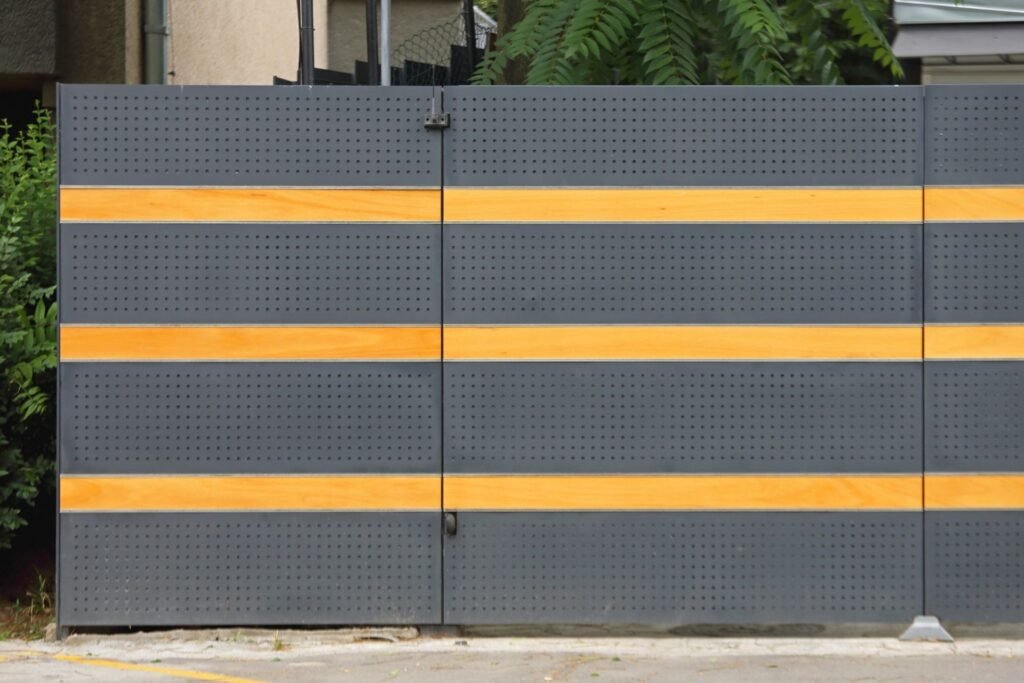
Local Regulations And Guidelines In NZ
Understanding local regulations and guidelines is crucial for any construction project in New Zealand. Compliance ensures that your project meets safety standards and avoids potential legal issues. Here’s a detailed look at the key aspects:
Building Codes and Permits
Building Codes and Permits are essential components of any construction project in New Zealand. The Building Act 2004 and the Building Code set the framework for ensuring that buildings are safe, healthy, and durable. The Building Code outlines the performance standards buildings must meet, while the Building Act governs the process of building work.
1. Building Act 2004: This Act outlines the roles and responsibilities of various stakeholders in the construction industry. It includes provisions for building consents, inspections, and the certification process. Understanding this Act is critical as it forms the legal foundation for all building work in New Zealand.
2. Building Code: The Building Code is a performance-based code, meaning it specifies the standards that buildings must meet but does not prescribe how to achieve them. This allows for flexibility and innovation in construction methods. Key areas covered include structural stability, fire safety, access, moisture control, and energy efficiency.
3. Building Consents: Before starting any building work, you need to obtain a building consent from your local council. This process involves submitting detailed plans and specifications for approval. Building without consent can result in fines and orders to demolish non-compliant structures.
Compliance with Local Council Requirements
Compliance with Local Council Requirements is vital for the success of your construction project. Each council may have specific regulations and bylaws that address local conditions and needs. Here’s why it’s important:
1. Zoning Laws: Zoning laws dictate what types of buildings can be constructed in certain areas. They control land use to ensure compatibility with community goals, environmental protection, and public health and safety. For instance, residential zones will have different requirements compared to commercial or industrial zones.
2. Resource Consents: In addition to building consents, some projects may require resource consents under the Resource Management Act (RMA). This is especially true for projects that could have significant environmental impacts, such as those near waterways or in heritage areas. Resource consents ensure that environmental effects are considered and mitigated.
3. Local Bylaws: Local bylaws can cover a range of issues from noise control to heritage preservation. These bylaws are designed to protect the local community and environment. Ensuring your project adheres to these bylaws helps avoid delays and penalties.
Case Studies or Examples
To illustrate the importance of following local regulations, here are some real-world examples from New Zealand:
1. Christchurch Rebuild: Following the 2011 earthquake, the Christchurch rebuild provided numerous examples of the importance of adhering to building codes. Many buildings that met the standards fared much better in the quake, highlighting the effectiveness of the Building Code in promoting safety.
2. Auckland’s Unitary Plan: The Auckland Unitary Plan, which guides the city’s growth and development, includes strict zoning laws and heritage protections. A recent case involved a developer who failed to secure the necessary resource consents for a project near a historic site, resulting in significant fines and project delays. This example underscores the importance of understanding and complying with local council requirements.
3. Wellington’s Resilience Strategy: In Wellington, a city prone to seismic activity, the local council has implemented stringent requirements for building reinforcement and earthquake readiness. Buildings constructed or retrofitted to meet these standards have proven to be more resilient in earthquakes, protecting lives and property.
In summary, adhering to local regulations and guidelines is not just a legal obligation but a crucial step in ensuring the safety, sustainability, and success of your construction project in New Zealand. By understanding and complying with building codes, obtaining the necessary permits, and following local council requirements, you can avoid legal issues and contribute to the safety and well-being of your community.
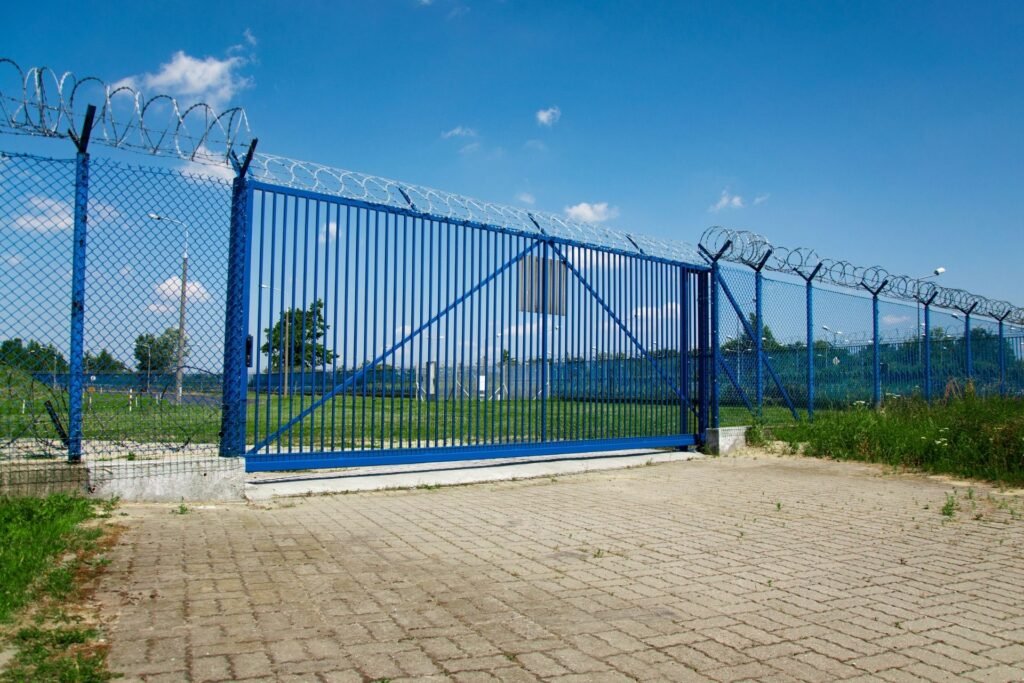
Practical Tips For Deciding The Number Of Gates
When it comes to deciding the number of gates for your property, it’s important to approach the task with a clear understanding of your specific needs and future plans. Here are some practical tips to guide you through this process.
Assessing Your Needs
The first step in determining the number of gates you need is to thoroughly evaluate your requirements. This involves considering three primary factors: security, access, and aesthetics.
- Security Needs: Think about the level of security you require. If you have a large property or live in an area with higher security concerns, multiple gates might be necessary to ensure comprehensive coverage and controlled access points. Additionally, consider if you need special features like electronic locks or surveillance systems for each gate.
- Access Requirements: Assess how many access points you need for convenient movement in and out of your property. For example, a large estate might benefit from separate gates for vehicles and pedestrians, while a smaller property might only need one multifunctional gate.
- Aesthetic Considerations: Gates can significantly impact the overall look of your property. Think about how the placement and number of gates will contribute to the aesthetic appeal. It’s important to strike a balance between functionality and visual harmony with your property’s design.
Consulting with Professionals
Once you have a good grasp of your needs, consulting with professionals can provide valuable insights. Experts in security, landscaping, and architecture can offer advice on the optimal number and placement of gates. They can help you understand the technical aspects and ensure that your choices align with both your security requirements and aesthetic preferences.
- Security Experts: These professionals can assess your property’s vulnerabilities and recommend the best gate solutions to enhance safety.
- Landscapers and Architects: They can help integrate gates seamlessly into your property’s design, ensuring they complement the overall look while serving their functional purpose.
- Contractors: A skilled contractor can provide practical advice on the installation process, potential challenges, and maintenance requirements.
Planning for Future Needs
When planning the number of gates, it’s essential to think long-term. Consider any future expansions or changes you might make to your property. This foresight can save you from the hassle and expense of additional installations down the line.
- Potential Expansions: If you plan to expand your property or add new features such as a guest house, garage, or garden, factor in these future needs when deciding on the number of gates.
- Adaptability: Choose gate designs that can be easily modified or expanded to accommodate changes in your property layout or usage patterns.
- Resale Value: Thoughtful planning can also enhance your property’s resale value. Prospective buyers will appreciate the foresight and convenience of well-placed gates that meet a variety of needs.
Budget Considerations
Finally, balancing your budget with your functional and aesthetic preferences is crucial. Gates come in a wide range of styles and prices, so it’s important to find options that fit your financial plan without compromising on quality or appearance.
- Cost vs. Quality: Invest in gates that offer good value for money. High-quality materials and reliable security features might have a higher upfront cost but can save you money on repairs and replacements in the long run.
- Aesthetic Preferences: Don’t sacrifice the visual appeal for cost. There are many affordable gate options that still provide an attractive look. Shop around to find designs that match your property’s style and your personal taste.
- Maintenance: Consider the long-term maintenance costs. Some materials require more upkeep than others, so choose gates that fit your willingness and ability to maintain them.
By following these practical tips, you can make informed decisions about the number of gates needed for your property, ensuring they meet your security, access, and aesthetic requirements both now and in the future.
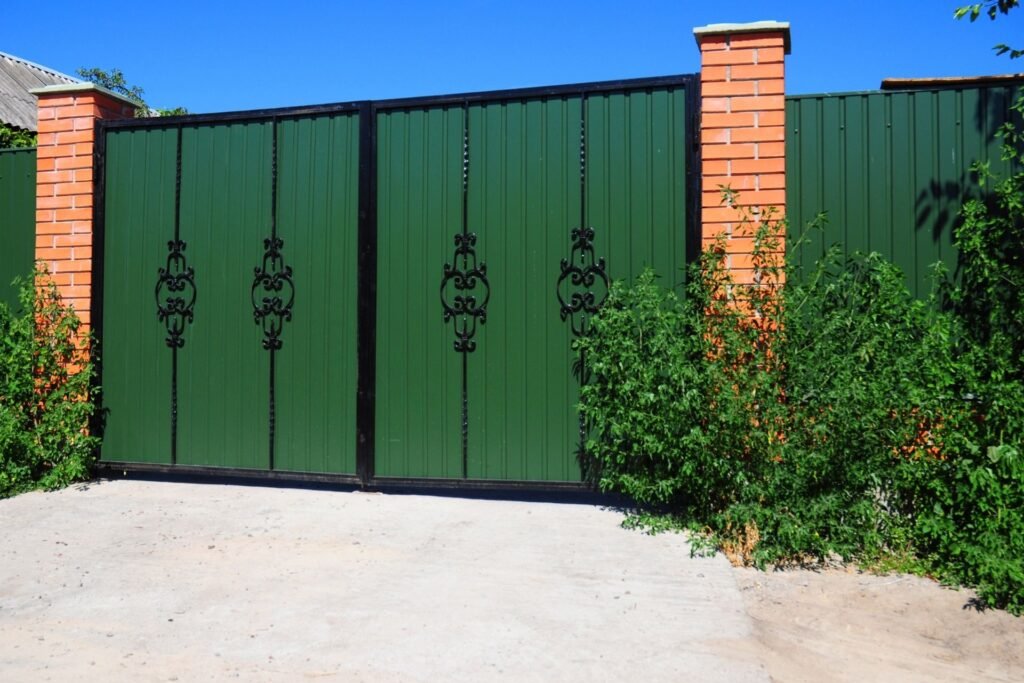
Common Mistakes To Avoid
Overlooking Local Regulations
When installing a gate, one of the most common mistakes is overlooking local regulations. Every region has its own set of rules and regulations regarding property modifications, including gate installations. Non-compliance with these regulations can lead to serious consequences. For example, you might face fines, be forced to remove the gate, or even face legal action. Moreover, if your gate doesn’t meet local safety standards, it could pose a hazard to your family and neighbors. Always check with your local council or regulatory body before starting any installation work. This not only ensures that you are on the right side of the law but also gives you peace of mind knowing that your installation is safe and compliant.
Poor Planning
Another significant mistake is poor planning. Installing a gate isn’t just about picking the design you like and getting it installed; it requires meticulous planning. You need to consider factors like the size of the gate, the type of materials that will be used, the gate’s purpose, and its location on your property. A well-thought-out plan will help you avoid issues such as the gate not fitting correctly, being difficult to open and close, or not providing the security or aesthetic value you desire. Spend time on the planning stage, and consider hiring a professional if you’re unsure about how to proceed. Thorough planning ensures that your gate installation goes smoothly and meets all your expectations.
Ignoring Maintenance
Finally, ignoring maintenance is a common mistake that can lead to long-term problems. Gates, like any other part of your property, require regular maintenance to remain functional and visually appealing. This is especially true for gates exposed to the elements, which can suffer from rust, warping, or other forms of wear and tear over time. Regular maintenance tasks might include lubricating hinges, checking for and repairing damage, and repainting or treating the gate’s surface to protect it from the weather. Ensuring that your gate is durable and easy to maintain will save you time and money in the long run, and keep your property looking its best.
By avoiding these common mistakes—overlooking local regulations, poor planning, and ignoring maintenance—you can ensure a successful gate installation that enhances your property’s security and aesthetic appeal.
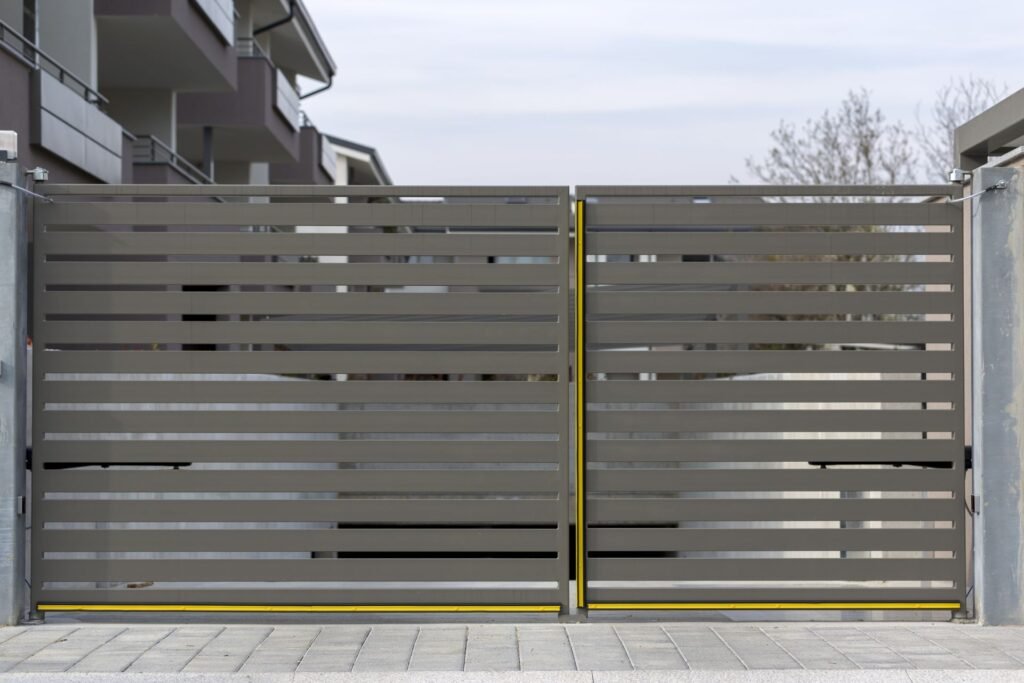
Real-Life Examples And Case Studies
Residential Case Study: A Typical Suburban Home in Auckland
In Auckland, one of New Zealand’s most bustling cities, a typical suburban home offers a perfect example of the variety of construction projects and maintenance tasks homeowners might face. Take, for instance, a three-bedroom home in the heart of a suburban neighborhood. This property underwent significant landscaping to enhance its outdoor living space, focusing on both aesthetic appeal and functionality.
The project began with the installation of a retaining wall to manage the sloping terrain, which is a common challenge in Auckland due to its hilly landscape. The wall not only added structural integrity to the garden but also created a level area perfect for a new deck. Composite decking was chosen for its durability and low maintenance, aligning with the homeowner’s desire for an easy-care outdoor area.
Additionally, the driveway was resurfaced with stamped concrete, adding both visual appeal and longevity. The new driveway design included proper drainage solutions to prevent water pooling, which can be a frequent issue given Auckland’s rainy climate. This case study illustrates how thoughtful planning and modern materials can transform a suburban home, making it more functional and visually appealing.
Agricultural Case Study: A Farm in Waikato
In the agricultural heartland of Waikato, a farm serves as a prime example of the diverse needs within the rural sector. This farm, spread over several hectares, required a comprehensive approach to improve its infrastructure. The project focused on enhancing both productivity and sustainability.
One major task was the construction of a new drainage system to manage the excess water that often accumulates during heavy rains, a common issue in Waikato’s fertile but often waterlogged soils. By installing modern drainage solutions, the farm was able to prevent soil erosion and improve crop yield.
The farm also invested in durable fencing to secure livestock and delineate different crop areas. This fencing project utilized treated timber, known for its longevity and resistance to the elements, ensuring that the farm’s investment would stand the test of time. Additionally, several farm buildings were refurbished, with particular attention to enhancing insulation and ventilation, critical factors for maintaining the health and productivity of both livestock and crops.
Commercial Case Study: A Business Property in Wellington
Wellington, New Zealand’s capital, presents unique challenges for commercial properties due to its windy conditions and seismic activity. A recent case study involves a commercial building located in the central business district, which underwent significant retrofitting to improve its resilience and functionality.
The primary focus of the project was seismic strengthening. Given Wellington’s susceptibility to earthquakes, the building was reinforced with steel bracing and base isolators to absorb and dissipate seismic energy. This upgrade not only brought the building up to modern safety standards but also provided peace of mind to tenants and clients.
In addition to structural improvements, the building’s façade was updated with modern cladding materials that can withstand Wellington’s harsh weather. This included installing double-glazed windows to enhance energy efficiency and reduce noise from the bustling city streets. The interior was also redesigned to create a more open and flexible workspace, catering to the evolving needs of modern businesses.
By examining these real-life examples, we can see how tailored construction and maintenance solutions address the specific challenges and opportunities in different New Zealand environments. Whether it’s a suburban home in Auckland, a farm in Waikato, or a commercial property in Wellington, each case study highlights the importance of context-specific planning and execution.
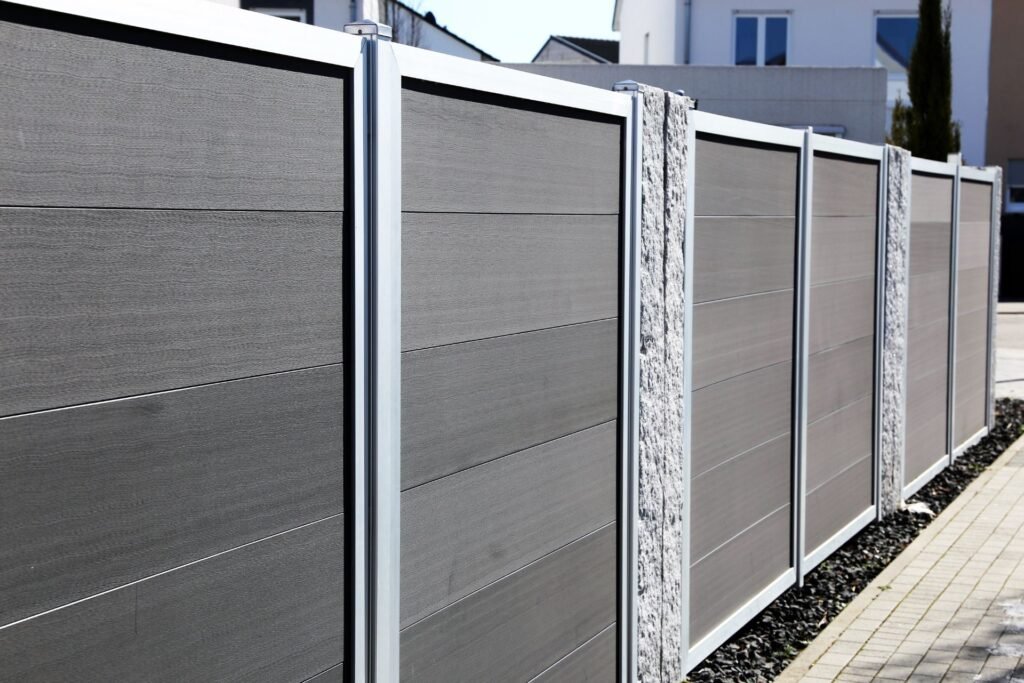
FAQs: About How Many Gates Should A Fence Have NZ
How do I determine the right number of gates for my property?
Determining the right number of gates for your property involves assessing your security needs, the frequency of access required, the layout of your land, and any local regulations. For residential properties, consider primary entry points for vehicles and pedestrians, while larger properties may need additional gates for convenience and emergency access.
What are the benefits of having multiple gates?
Multiple gates can improve accessibility, enhance security by providing controlled entry points, and add aesthetic value to your property. They can also facilitate better traffic flow and emergency access, making your property more functional and safer.
How much does it cost to install additional gates in NZ?
The cost of installing additional gates in New Zealand varies based on the type of gate (swing, sliding, automatic), materials used, and the complexity of the installation. Basic gates may cost a few hundred dollars, while more advanced or custom gates can run into the thousands.
Are there specific gate designs recommended for certain types of properties?
Yes, gate designs should match the property type and intended use. For residential properties, swing or sliding gates are common. Agricultural properties might benefit from wider gates for machinery, while commercial properties may require robust, secure gates with automation features.
What are the maintenance requirements for different types of gates?
Maintenance varies by gate type and material. Wooden gates require regular staining or painting to prevent rot, metal gates need rust prevention treatments, and automatic gates require periodic checks of mechanical and electrical components. Regular lubrication and cleaning are necessary for all types to ensure smooth operation.
How can I ensure my gates comply with local regulations in NZ?
To ensure compliance, check with your local council for specific building codes and permit requirements related to gate installation. It’s also advisable to consult with a professional installer who is familiar with local regulations and can help navigate the approval process.
What are the common mistakes to avoid when planning the number of gates for a fence?
Common mistakes include not considering future needs, overlooking local regulations, and failing to plan for maintenance. It’s also important to avoid placing gates in inconvenient locations that could hinder access or compromise security.
Can adding more gates affect my property’s value?
Yes, strategically placed and well-designed gates can enhance your property’s value by improving functionality, security, and curb appeal. However, poorly planned gates or an excessive number of gates can have the opposite effect.
How do I plan for future needs when deciding on the number of gates?
Consider potential changes in property use, expansions, or modifications. Planning for future needs involves thinking about long-term accessibility, potential new structures or pathways, and changes in traffic flow on your property.
What types of gates are ideal for limited space?
For limited space, sliding gates are often ideal as they do not require the swing clearance that traditional gates need. Pedestrian gates can also be a good solution for providing access without taking up much space.
Conclusion
In conclusion, we have explored the essential aspects of fencing, from understanding various materials and their benefits to considering factors like cost, durability, and aesthetics. We’ve highlighted how choosing the right fence can enhance not only the security of your property but also its overall appeal. Now, it’s time to take the next step—evaluate your specific needs and preferences. Don’t hesitate to consult with local fencing experts who can offer tailored advice and solutions. By doing so, you ensure that your investment is both practical and visually pleasing, perfectly suited to your home’s unique style and requirements.
About the Author:
Mike Veail is a recognized digital marketing expert with over 6 years of experience in helping tradespeople and small businesses thrive online. A former quantity surveyor, Mike combines deep industry knowledge with hands-on expertise in SEO and Google Ads. His marketing strategies are tailored to the specific needs of the trades sector, helping businesses increase visibility and generate more leads through proven, ethical methods.
Mike has successfully partnered with numerous companies, establishing a track record of delivering measurable results. His work has been featured across various platforms that showcase his expertise in lead generation and online marketing for the trades sector.
Learn more about Mike's experience and services at https://theleadguy.online or follow him on social media:

